Unlocking Self-Expression in Children with Autism Using ABA Therapy
Applied Behavior Analysis (ABA) is a scientifically supported approach that forms the foundation for developing essential skills in children with autism. It is especially effective in fostering self-expression, which is critical for emotional well-being, social interaction, and self-advocacy. By integrating evidence-based techniques with innovative tools like visual supports and engaging play activities, therapists, parents, and caregivers can create a nurturing environment that promotes confidence, independence, and leadership in autistic children.
Utilizing Evidence-Based Techniques to Foster Self-Expression
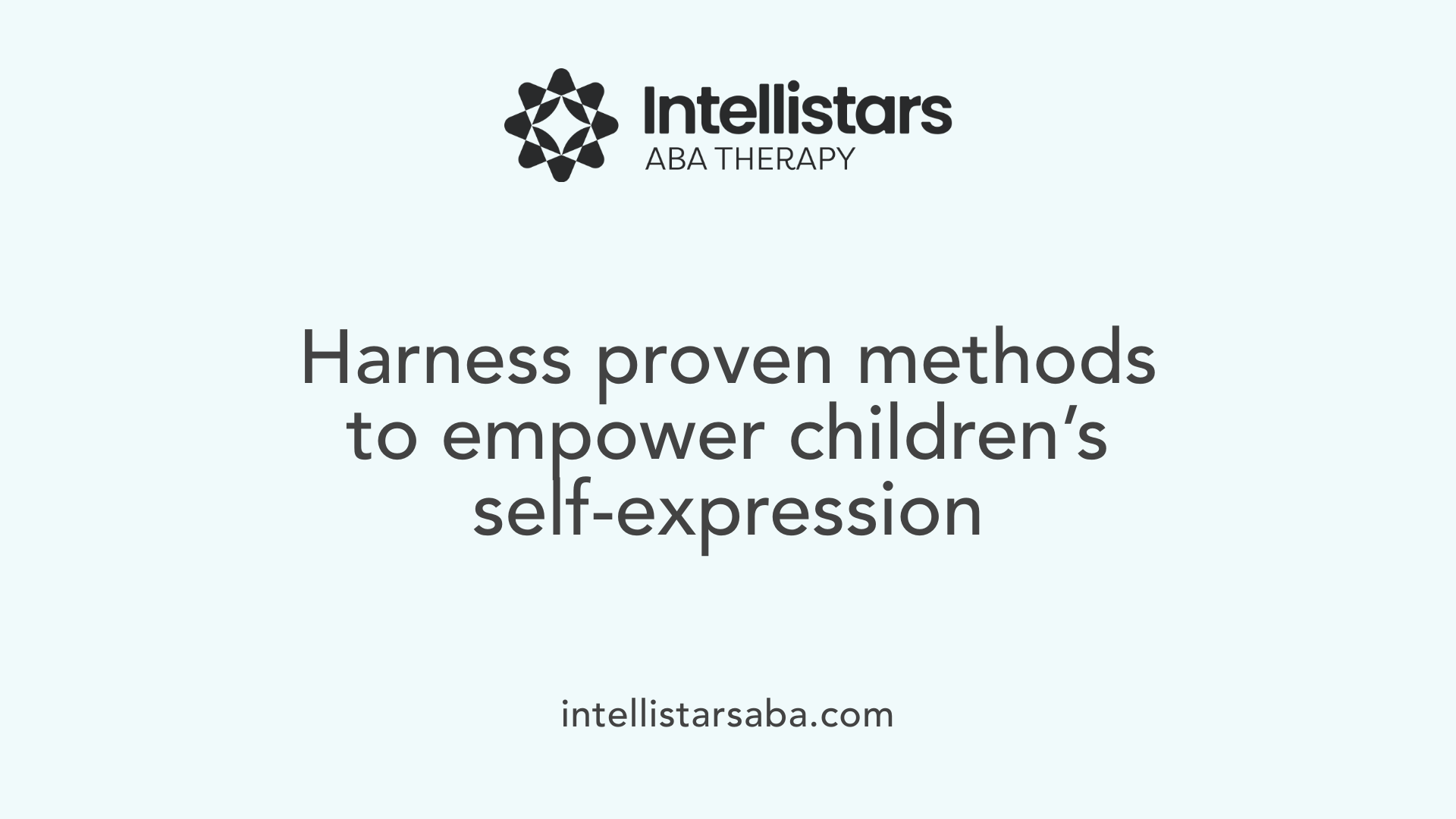
How can ABA therapy be used to foster self-expression in children with autism?
ABA (Applied Behavior Analysis) therapy is a scientifically supported approach that can significantly enhance self-expression in children with autism. Effective ABA strategies are adapted to each child's unique needs and include a variety of techniques designed to improve communication, emotional understanding, and social interaction.
One fundamental method is teaching alternative communication tools. These include PECS (Picture Exchange Communication System), sign language, and the use of assistive technology such as communication devices. These tools provide children with non-verbal or minimally verbal children a reliable way to express their needs, preferences, and feelings.
In addition, visual supports play a crucial role. Visual schedules, social stories, and choice boards help children understand routines and expectations, reducing anxiety and promoting independence. These visuals make abstract ideas concrete, leveraging children’s strengths in visual learning.
ABA also incorporates role-playing, video modeling, and social narratives. Role-playing scenarios simulate real-life situations, giving children practice in expressing themselves confidently. Video modeling demonstrates desired behaviors or communication strategies that children can imitate, improving their social confidence and self-awareness.
Involving art therapy offers another nonverbal avenue for emotional expression. Activities such as drawing, painting, or modeling clay allow children to externalize emotions and explore their interests creatively. These methods foster self-awareness and build self-esteem.
Parents and caregivers are vital to the success of these interventions. Consistent practice across environments and ongoing collaboration with therapists help children generalize their communication skills. Reinforcing successes and encouraging spontaneous expression further strengthen their ability to advocate for themselves.
Overall, ABA therapy, combined with visual supports, alternative communication techniques, art therapy, and active parental involvement, creates a comprehensive framework. This approach promotes meaningful self-expression, empowering children on the autism spectrum to connect more effectively with others and advocate for their needs.
The Power of Visual Supports in Enhancing Communication and Independence
What types of visual supports are commonly used in ABA therapy?
Visual supports are diverse tools that help children with autism understand and navigate their environment more effectively. Common types include Picture Exchange Communication System (PECS), social stories, visual schedules, and choice boards.
- PECS involves exchanging pictures to communicate desires or needs.
- Social stories are short descriptions that illustrate social situations and appropriate responses.
- Visual schedules outline daily routines, helping children anticipate what comes next.
- Choice boards give children options, fostering decision-making skills.
Each of these supports targets specific needs, making daily interactions clearer and less stressful.
How do visual supports reduce anxiety and promote routine understanding?
Children with autism often find unpredictable situations overwhelming. Visual supports offer consistency and predictability by clearly outlining routines, expectations, and coping strategies.
- They reduce uncertainty, which in turn diminishes anxiety.
- Visual cues provide a concrete reference that children can rely on.
- By knowing what to expect, children feel more secure and confident.
This structured approach helps children transition smoothly through daily activities, creating a calmer learning environment.
How should visuals be personalized based on the child's needs?
Effective visual supports are tailored to each child's preferences and developmental level.
- Incorporate images or symbols that resonate with the child’s interests.
- Adjust complexity based on the child's cognitive abilities.
- Involve the child in creating their visuals to increase engagement and ownership.
- Regularly update visuals to reflect the child's growth and changing needs.
Personalization ensures that supports are relevant, effective, and foster a sense of independence.
How important is collaboration among therapists, parents, and caregivers?
Consistent use of visual supports depends heavily on teamwork.
- Therapists, parents, and caregivers need to coordinate to ensure visuals are used uniformly across settings.
- Sharing insights about what works best for the child helps refine visual supports.
- Collaborative planning ensures that children receive reinforced learning opportunities in different environments.
This joint effort maximizes the benefits of visual supports, leading to better communication and increased independence.
How do visual supports and aids enhance self-expression through ABA therapy?
By providing clear, tangible ways to communicate, visual supports greatly enhance self-expression for children in ABA therapy.
- Tools like PECS, social stories, visual schedules, and choice boards enable children to express their needs, thoughts, and emotions more effectively.
- They help reduce feelings of frustration or helplessness that often accompany language challenges.
- Visual cues promote confidence in social interactions, encouraging children to participate more actively.
- Personalizing visuals based on each child's interests and developmental stage makes self-expression more accessible and meaningful.
Overall, visual supports bridge communication gaps, empower children to advocate for themselves, and foster their individual identities.
Strategies to Boost Communication Skills and Emotional Expression
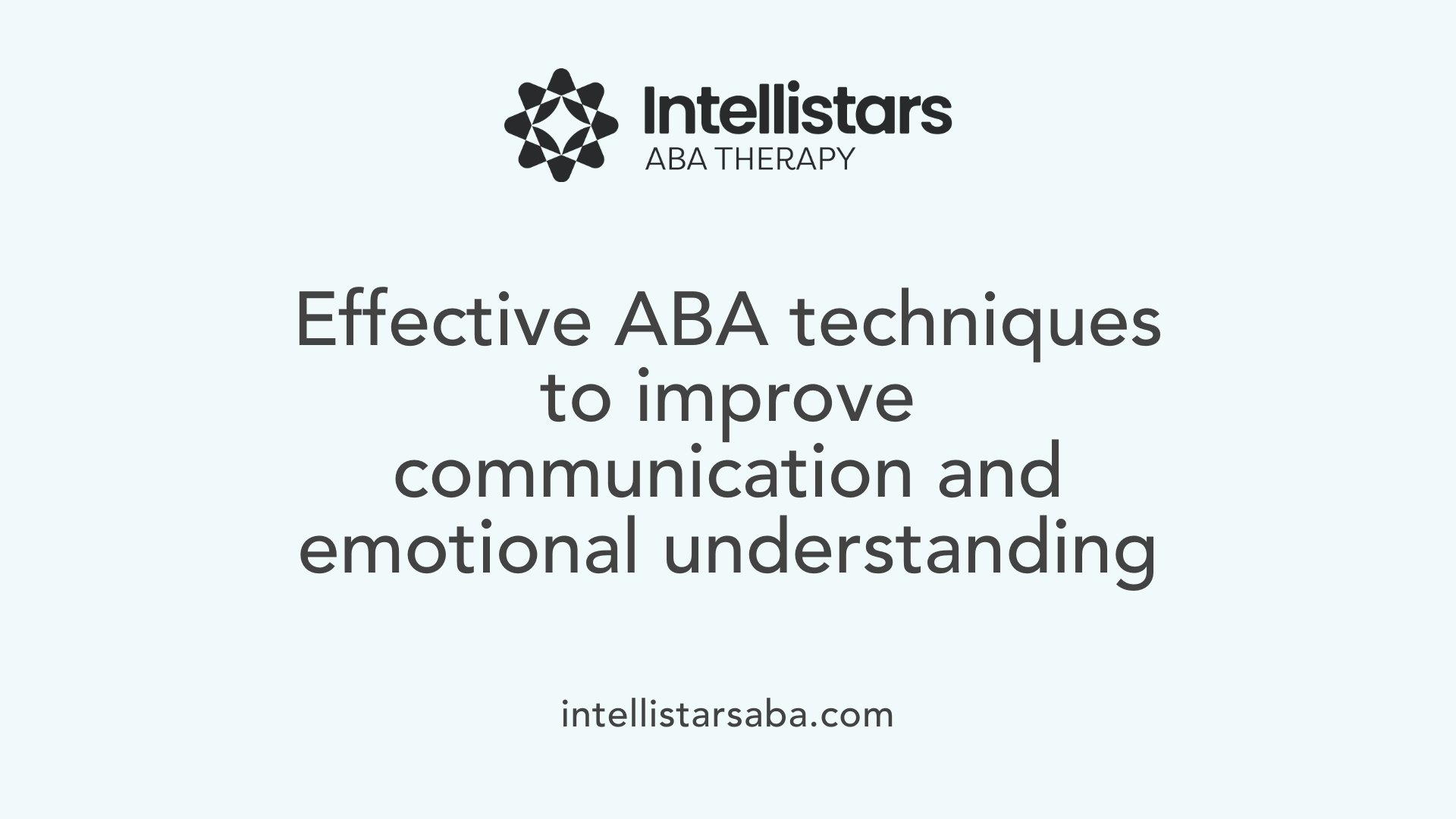
What strategies within ABA therapy can help improve communication skills and self-expression?
ABA therapy offers several effective techniques to help children with autism develop stronger communication skills and express their emotions more effectively. Central among these methods are visual supports such as Picture Exchange Communication Systems (PECS), social stories, and communication boards. These tools serve as visual cues that make understanding and expressing needs easier, especially for children who are non-verbal or minimally verbal.
Prompting, modeling, and shaping are also fundamental strategies in ABA to teach both verbal and non-verbal communication. Prompting involves giving children cues to initiate a response, which is gradually faded as independence increases. Modeling demonstrates appropriate communication behavior, encouraging imitation, while shaping involves reinforcing successive approximations to desired skills.
In addition to these, fostering activities that encourage self-expression—such as art, music, storytelling, and role-playing—allows children to externalize their emotions, ideas, and preferences. These activities are vital for expanding emotional vocabulary and understanding, providing meaningful avenues for children to share their experiences.
Functional Communication Training (FCT) is another key technique integrated into ABA, which teaches children alternative ways to communicate their needs, reducing frustration and challenging behaviors. Sign language training complements FCT effectively, especially for children who find gestures more natural or accessible.
Collaboration with parents and caregivers plays a crucial role. Consistent reinforcement and response across different settings help solidify communication skills. Using assistive technologies like communication apps or devices further enhances expressive opportunities.
In summary, these strategies—visual supports, prompting, modeling, encouraging expressive activities, FCT, sign language, and involving family—create a comprehensive approach within ABA therapy to foster meaningful communication and emotional expression in children with autism.
The Role of Play Therapy in Promoting Expression and Social Skills
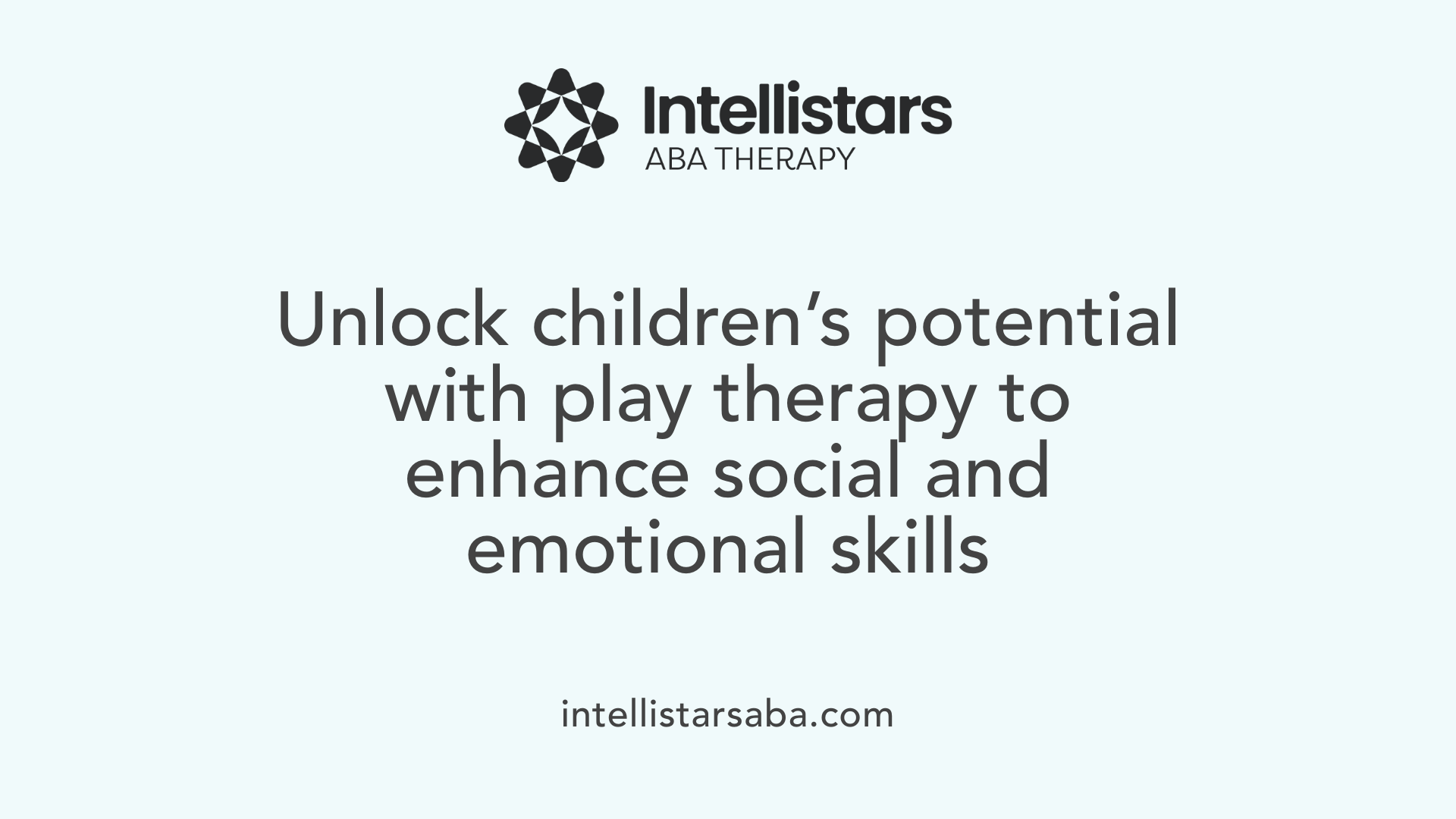
Can play therapy integrated with ABA improve self-expression in children with autism?
Yes, integrating play therapy with ABA can significantly enhance self-expression in children with autism. This combined approach merges the structured, evidence-based techniques of ABA with the natural, expressive environment of play therapy.
ABA, or Applied Behavior Analysis, systematically teaches communication, social, and functional skills using positive reinforcement and task analysis. Play therapy, on the other hand, offers a safe space where children can explore their emotions and develop social skills through engaging activities like art, music, role-playing, and toys.
By blending these methods, therapists create personalized interventions that encourage spontaneous communication and emotional regulation. Children can express themselves more freely and authentically in a playful setting, which reduces anxiety and promotes confidence.
This integration not only addresses behavioral goals but also fosters emotional growth. Children learn to recognize their feelings, articulate needs, and build social connections—all vital for self-advocacy and independence.
Overall, the combination supports holistic development, improving both behavioral and emotional domains, which are essential for children with autism to thrive socially and personally.
Developing Self-Advocacy and Leadership Skills through ABA
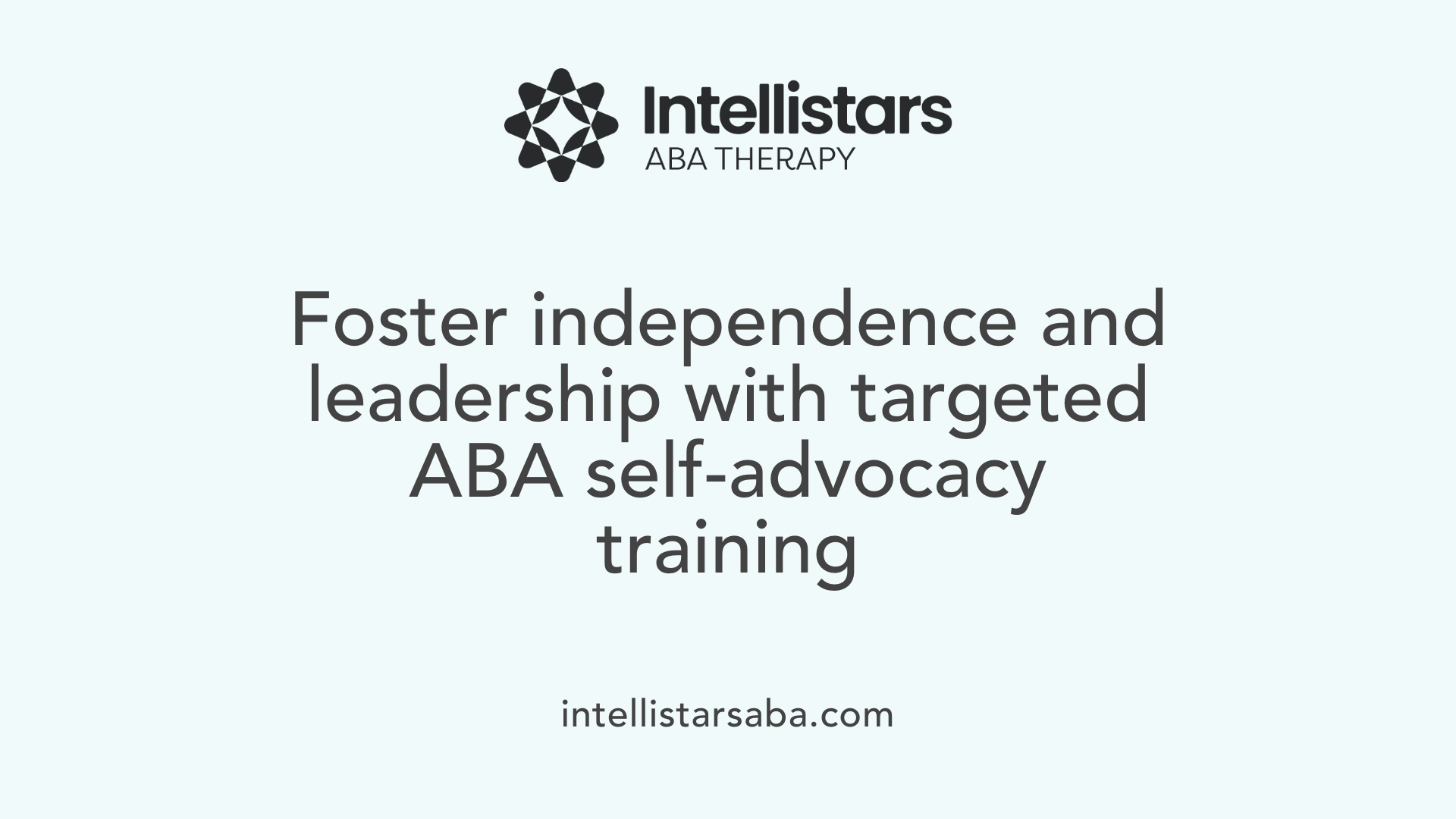
What does the research say about using ABA to develop self-advocacy and leadership skills in children with autism?
Research shows that Applied Behavior Analysis (ABA) methods are effective in fostering self-advocacy and leadership qualities among children with autism. Through structured interventions, ABA can teach essential skills like requesting accommodations, understanding personal rights, and making decisions.
One approach, such as the TUNE In program, incorporates self-advocacy into its curriculum, helping autistic individuals gain confidence to express their preferences and needs. Early intervention strategies that include self-advocacy training align with laws like the Individuals with Disabilities Education Act (IDEA) and the Americans with Disabilities Act (ADA), emphasizing the importance of developing self-determination from a young age.
Teaching self-advocacy within ABA involves direct instruction in behaviors like disclosure of autism, requesting support, and navigating social environments. Role-play activities simulate real-life advocacy scenarios, allowing children to practice expressing themselves in safe, controlled settings.
Reinforcing these behaviors through positive feedback and celebrating small successes encourages continued growth and confidence. For instance, when a child successfully asks for a needed break or clarifies a question, acknowledging their effort promotes further engagement.
Studies also highlight that ABA interventions focus on improving decision-making, problem-solving, and social skills, all of which are crucial for leadership development. Techniques such as Functional Communication Training (FCT) help children communicate their needs effectively, reducing frustration and enhancing independence.
Moreover, research underscores that integrating self-advocacy training into ABA not only supports personal empowerment but also contributes to broader leadership skills. As children learn to advocate for themselves, they develop greater resilience, self-awareness, and the capacity to influence their environment positively.
In summary, ABA provides a comprehensive framework for nurturing self-advocacy and leadership in children with autism. Through targeted teaching, consistent reinforcement, and opportunities for practice, children can achieve meaningful progress toward independence, confidence, and their ability to function as self-reliant individuals.
The Impact of Play-Based Interventions on Brain Development and Core Symptoms
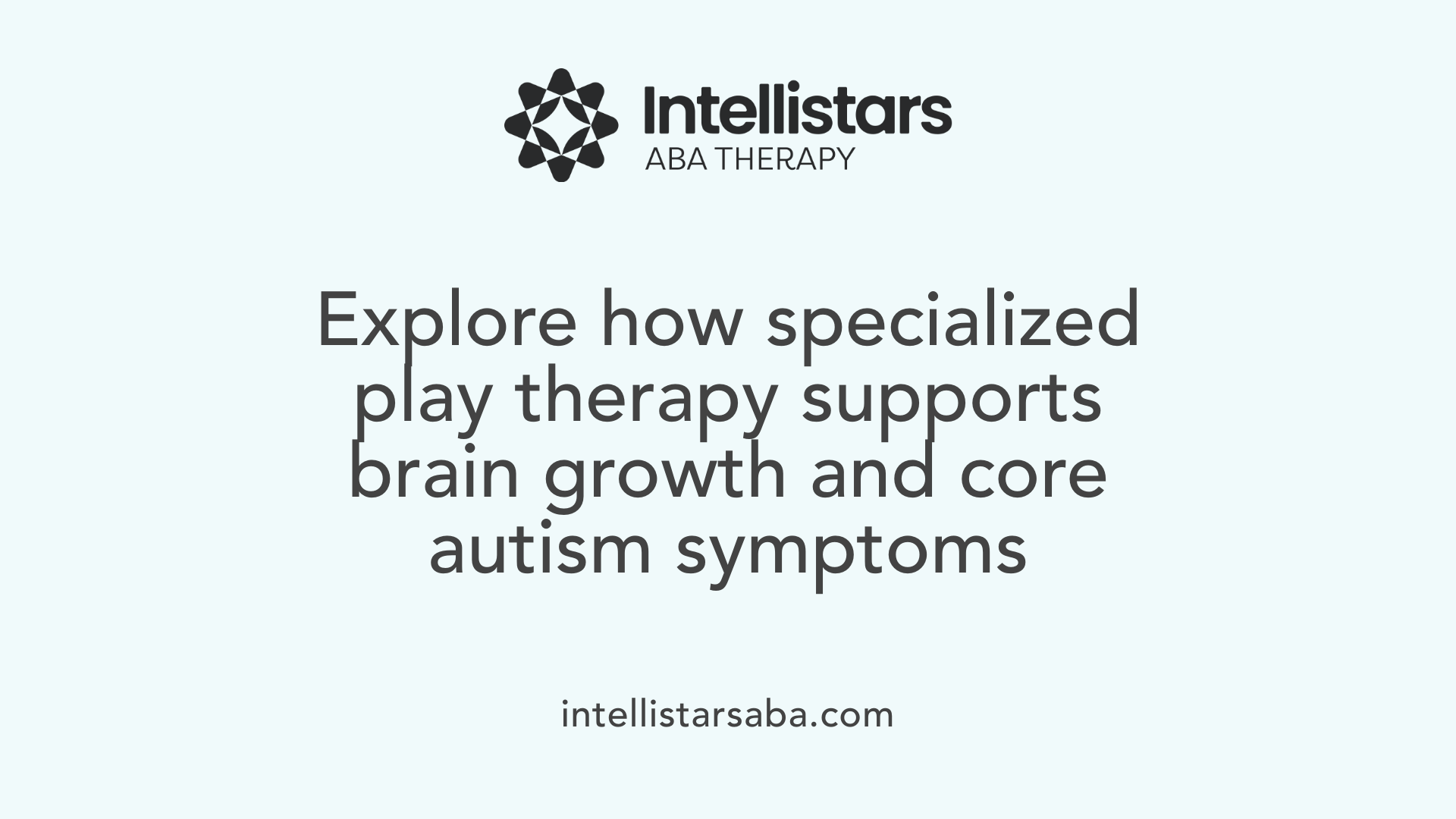
What types of play therapy are used and how do they support children with autism?
Various forms of play therapy are tailored to meet the unique needs of children with autism. Sensory integration therapy focuses on helping children process sensory information more effectively, improving their responses to stimuli. Art-play therapy combines creative activities with play to foster emotional expression and cognitive development.
Child-centered play therapy emphasizes aligning play activities with the child’s interests, encouraging spontaneous communication and social engagement. Additionally, structured play groups and specialized techniques, such as equine-assisted play therapy, provide social and emotional benefits by involving interactions with animals.
Each type of play therapy employs different methods but shares the common goal of promoting self-expression, emotional regulation, and social skills.
How does play influence brain development and neuroplasticity?
Play is fundamental to brain development, especially in children with autism. Engaging in play activities stimulates multiple areas of the brain, enhancing neural connectivity and fostering the formation of neural circuits.
Research indicates that play increases levels of brain-derived neurotrophic factors (BDNF) and neurotransmitters, which are essential for neuroplasticity—the brain’s ability to reorganize and adapt. This neuroplasticity facilitates learning and helps mitigate core symptoms of autism, such as difficulties with social interaction and communication.
Moreover, structured play promotes sensory integration and improves processing across neural networks, supporting the overall development of cognitive and motor skills.
How can play therapy improve core symptoms such as joint attention, social skills, and emotional regulation?
Children with autism often exhibit challenges with joint attention, which impacts their ability to coordinate focus with others. Play therapy enhances joint attention by encouraging shared activities and interactions that require mutual focus.
Social skills are developed through interactive play, where children learn turn-taking, sharing, and communication within safe, engaging environments. Techniques like modeling and role-playing help children practice social scripts and respond appropriately.
Emotional regulation improves as children learn to express their feelings and manage overstimulation or frustration through play-based activities. A supportive play environment fosters emotional awareness and resilience.
How are play interventions tailored to individual needs?
Effective play therapy begins with a comprehensive evaluation of the child's developmental profile, interests, and sensory preferences. Therapists customize activities and environments to suit each child's strengths and challenges.
For example, some children may respond better to sensory-based play, while others benefit from creative arts or role-playing scenarios. The intervention plan is regularly updated based on progress, ensuring continued engagement and growth.
Involving parents and caregivers in planning and implementing play strategies helps maintain consistency across settings, maximizing benefits.
| Type of Play Therapy | Focus Area | Main Techniques | Benefits |
|---|---|---|---|
| Sensory Integration | Sensory processing | Exposure to sensory stimuli, routines | Reduces hypersensitivity, improves responses to sensory input |
| Art-Play Therapy | Emotional and cognitive expression | Drawing, painting, sculpture | Enhances communication, creativity, emotional regulation |
| Child-Centered Play | Social engagement and spontaneity | Responsive play, child-led activities | Builds trust, encourages self-expression |
| Equine-Assisted Play | Social bonding and emotional regulation | Interaction with horses, guided activities | Increases confidence, improves social skills |
How does research support the use of ABA to develop self-advocacy and leadership?
Research shows that ABA methods are effective in nurturing self-advocacy and leadership skills in children with autism. Targeted interventions incorporate social skill training, decision-making exercises, and problem-solving tasks.
Programs like the TUNE In initiative explicitly teach children how to express their needs, request accommodations, and understand their rights, encouraging independence.
In practice, ABA uses techniques such as Functional Communication Training (FCT), role-playing scenarios, and choice-making activities to empower children to communicate effectively and make decisions.
Early ABA interventions that focus on self-advocacy align with legislative frameworks like IDEA and ADA, emphasizing the importance of developing self-determination from a young age.
From a neurodiversity perspective, these approaches respect individual differences, fostering authentic leadership qualities. Children are supported to internalize their strengths and advocate for themselves, which is crucial for lifelong independence and social participation.
| Skill Area | Intervention Strategies | Expected Outcomes | Supporting Legislation |
|---|---|---|---|
| Self-advocacy and self-determination | FCT, role-playing, choice-making | Increased confidence, independence | IDEA, ADA |
| Social skills development | Social narratives, video modeling | Better social interaction, trust | IDEA, ABA Best Practices |
| Leadership development | Decision-making tasks, problem-solving exercises | Future readiness, resilience | IDEA, individualized supports |
This body of evidence underscores the value of play and ABA-based interventions in promoting not only skill acquisition but also brain growth and core symptom improvement, supporting children with autism in leading more autonomous and fulfilling lives.
Empowering Autistic Children for a Bright Future
Using ABA therapy to foster self-expression in children with autism involves a multifaceted approach that combines scientifically supported techniques, personalized visual aids, engaging play activities, and parental involvement. These strategies not only help children communicate their needs and emotions more effectively but also lay the groundwork for developing self-advocacy and leadership skills essential for independence and social integration. Evidence suggests that integrating visual supports enhances understanding, reduces anxiety, and promotes autonomy, while play therapy stimulates brain development and emotional expression. Collectively, these interventions empower children to explore their talents, make informed decisions, and confidently advocate for themselves, paving the way for a more inclusive and supportive future.
References
- Visual Supports to Optimize ABA Therapy for Children with Autism
- Healthy Self-Expression and Autism: 4 Incredible Benefits
- ABA Therapy for Leadership Skills: Empowering Children
- ABA Strategies in Play Therapy for Children With Autism
- Guide to Teaching Self‑Advocacy in ABA - Arizona Institute for Autism
- Play therapy in children with autism: Its role, implications, and ...
- Healthy Self-Expression and Autism: 4 Incredible Benefits






